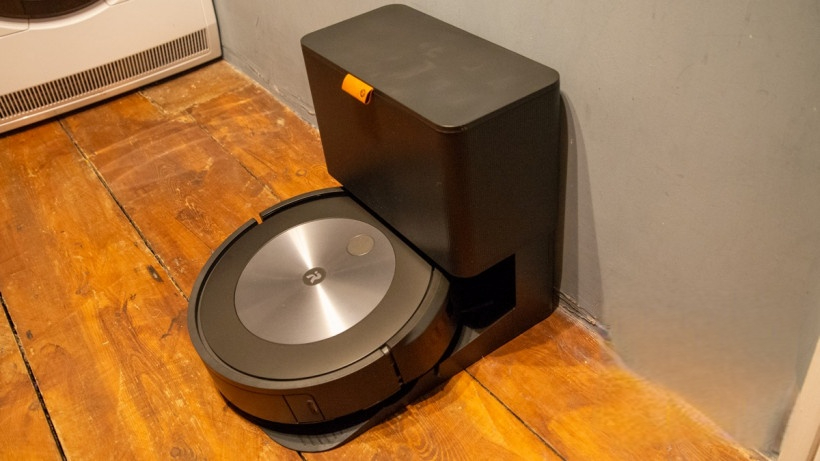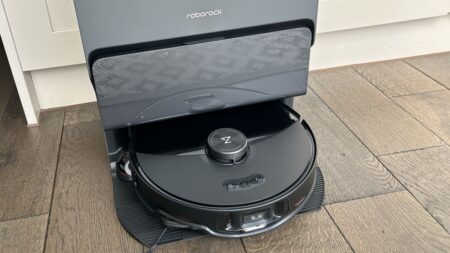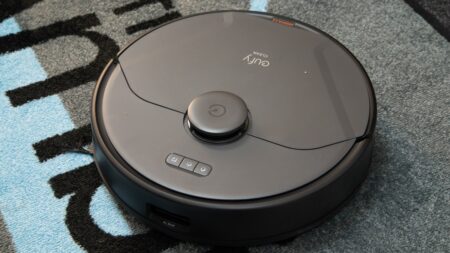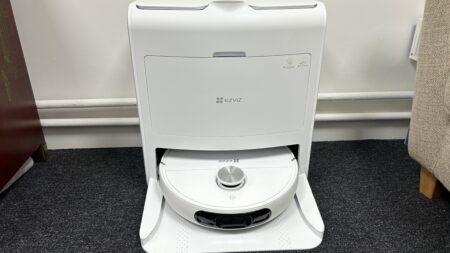Wires and pet mess are no problem for the clever j7+
Image recognition technology has improved a lot, to the point where the iRobot j7+ can avoid most entanglements, including pet poop, automatically. Improvements will come in the future, with more objects added to the recognition database. Powerful suction and excellent scheduling options let the j7+ fit around your life, cleaning when you need it to, and the digital assistant integration is the best we've ever seen with a robo cleaner. Mopping is not an option without buying a separate Braava robot, however, so those with a lot of hard floors and not much space may prefer the Roborock S7.
Pros
- Self empties
- Avoids most entanglements
- Clever map management and scheduling
- Great Alexa and GA skills
Cons
- Mopping requires a separate robot
- Can require several passes to clean
- Expensive
A common complaint about robot vacuums is that you have to clean up before you run them. If you don’t, you can come home to a chewed-up charging cable and a beached bot that didn’t finish the job.
But what’s the point of having a robot vacuum cleaner if you have to tidy up your house before using one
Thanks to the camera on the front of the iRobot Roomba j7+, you no longer need to, as it will detect and avoid problems automatically, including messy pets and cables.
The new Roomba j7 robot vacuum comes packing Precision Vision Navigation. This uses a tiny camera up front with a wide field of view and an LED spotlight to help it see objects. Paired with onboard AI and a faster processor, this can help it identify said objects and decide if it needs to find a different path to finish its mission
Rival: Roborock S8 Pro Ultra review
iRobot is so confident in its new technology – Precision Vision Navigation – that it’s backing it with the snappily named Pet Owner Official Promise (P.O.O.P.).
Yes, you read that right. iRobot will replace any Roomba j7 that accidentally smears pet poop all over your house. Well, it’s the least they can do really.
It’s similar to the Roborock S6 MaxV and the upcoming Roborock S7 MaxV Ultra in regards to having a camera array help with navigation, although the iRobot isn’t also a mop.
The j7 slides into the iRobot line-up just behind the more powerful Roomba s9 and slightly ahead of the Roomba i7, whose round shape it shares.
Like both those bots, the j7 comes with an optional clean base dirt disposal system, that will suck the dirt out of the vacuum, so you don’t have to.
Budget rival: Yeedi Vac 2 Pro review
This robo vacuum cleaner is available as the j7+, which has a self-emptying dock, and the cheaper j7, which has just the standard robot.
Features and cleaning power are the same for both robots. Is the camera enough to make this the must-have robot vacuum cleaner? Read on to find out.
iRobot Roomba j7+: Design and build
There’s only so much you can do with a robot vacuum cleaner, so it should come as no surprise that the j7+ has a round, squat body.
Verdict: iRobot Roomba Combo j7+ review
To be fair, the design has been upgraded a little over previous robots, with the j7+ having a sleeker body with just a single button on top.
Tap that once to start a clean, and then press and hold it to get the robot to return to its dock.
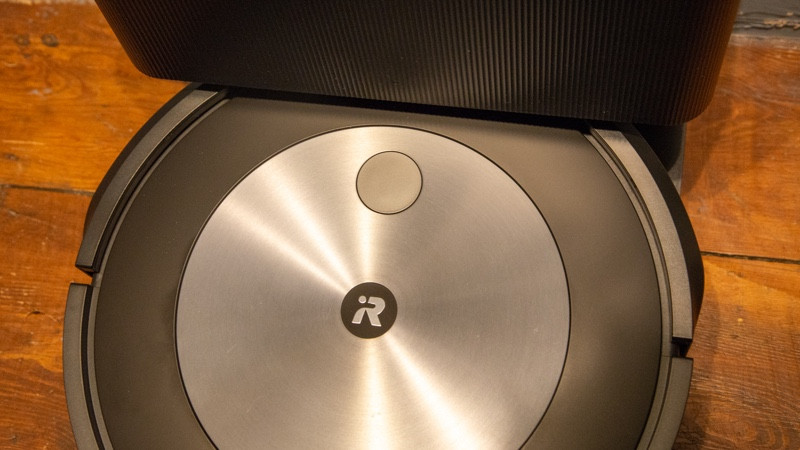
At the front, the main difference between this and other iRobot vacuums is the camera. This is used for obstacle avoidance, but it is also used for navigation, with the robot learning its surroundings and where it is.
Rival: Ecovacs Deebot X1 Omni review
Flip over the robot and there’s a single side-sweeper brush for edge work, plus dual rubber rollers that spin in opposite directions, which helps prevent hair from getting wrapped around them.
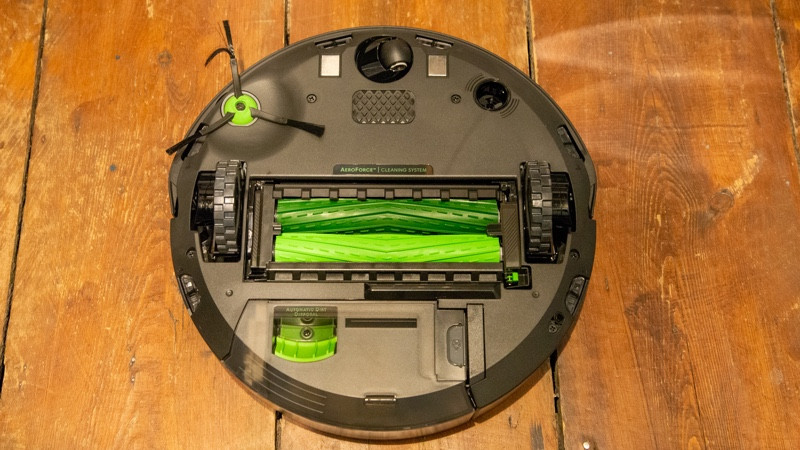
The 13oz bin pulls out the back of the robot, so you can empty it manually and clean out the filter. If you opt for the j7+, then you’ll need to touch this less often, as the Clean Base sucks dirt out at the end of the clean into a bag.
A redesign of the Clean Base means that the new one is shorter and broader than the one used on the iRobot i7+.
You still can’t fit the base under furniture or a sofa (you’ll have to get the regular j7 with its standard dock), but the new design makes the base feel less intrusive.
Alternative: Yeedi Mop Station Pro review
Flip open the top of the base and you can remove a full bag (you’ll need to empty this every 60 days or so). There’s room for a spare bag, too.
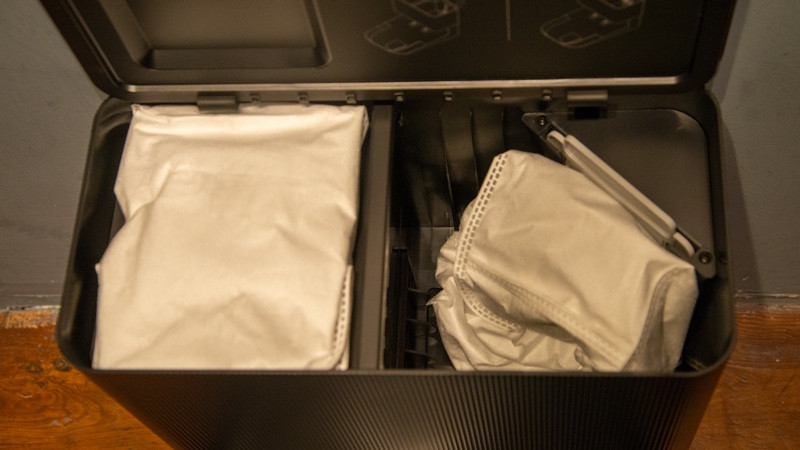
iRobot j7+: Features and in use
iRobot’s navigation has come on a long way, and the addition of the camera here improves things a lot, spotting potential problems and avoiding them.
So confident is iRobot that the j7+ won’t run over pet poop that it offers the Pet Owner Official Promise (P.O.O.P): if your robot runs over solid cat or dog mess in the first year, you’ll get a replacement free of charge.
Putting this to the test with a fake dog poo left strategically around the home, the j7+ managed to avoid it every single time.
The only time you’ll have a problem is if your pet makes a mess directly behind the robot when it’s docked, as the j7+ will reverse into it.

We also left cables on the floor to see how the j7+ coped, and it avoided everything that might cause problems.
Shoes, socks, cords, headphones, docks and pet poop are all objects that can currently be detected and iRobot tells us that future firmware updates to the Precision Vision Navigation tech will add new objects into the database.
Currently, Roborock’s vision system is slightly more advanced, although it’s had longer to train its image recognition.
Even with the camera, there are times when the j7+ will run into issues. Ours got stuck between some dining chair legs on one cleaning run, unable to find its way out.
It was an isolated incident and all robot vacuum cleaners will get themselves into trouble from time to time.
There are no official suction figures for the iRobot j7+, but it does a good job of picking up the mess, although not always on the first pass.
You can’t set the suction power in the app, but you can adjust how many passes the robot takes: two passes gives a deeper clean.
Roomba j7+: App and digital assistants
The iRobot app is used to control the robot’s more advanced features. First, you need to get a map stored, which can be built up during cleaning runs or you can start a special mapping run where the robot zooms around your house without cleaning.
Even with a mapping run, it can take two or three runs before a map is generated, which is far slower than with Roborock’s robots. Multiple maps can be stored, and the j7+ accurately detects which floor it’s on.
Once you’ve got a map, you can partition it into rooms and set additional cleaning areas by drawing boxes around them. For example, you might want to clean around your bar stools where you eat breakfast.
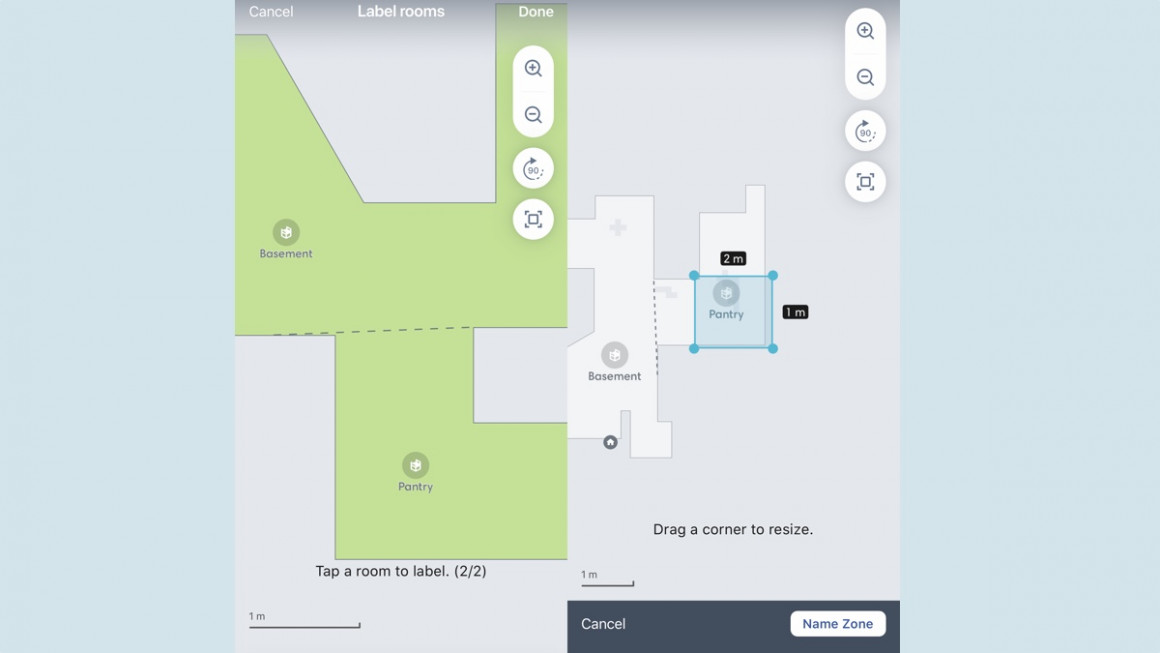
With rooms and zones, the j7+ can be set to clean everywhere or just the specific area that you want. The same applies to schedules, and you can make the j7+ clean where and when you want.
Who really wants to deal with the hassle of building detailed schedules, though? Thanks to iRobot Genius, you don’t have to. The more you use the robot, the more it works out when and where you want to clean, sending you schedule suggestions.
A new Quiet Drive option will turn the robot’s vacuum off as it navigates from room to room, so you can have it clean the kitchen then your bedroom while gliding silently past the nursery.
The bots can also now predict how long it will take to clean rooms, so if you are crunched for time, you can see which rooms you have time to do (for mapping robots).
Plus, you can schedule do not disturb times, so you know your robot won’t accidentally wake someone up or interrupt your Zoom call.
Or, you can avoid the whole issue and switch so that the j7+ cleans your home when you go out so that you return to a clean home.
There are no options for suction power, and the j7+ is locked to one power mode. On balance, that makes sense, as suction modes are often confusing and not clearly marked. What you can do is set the cleaning mode.
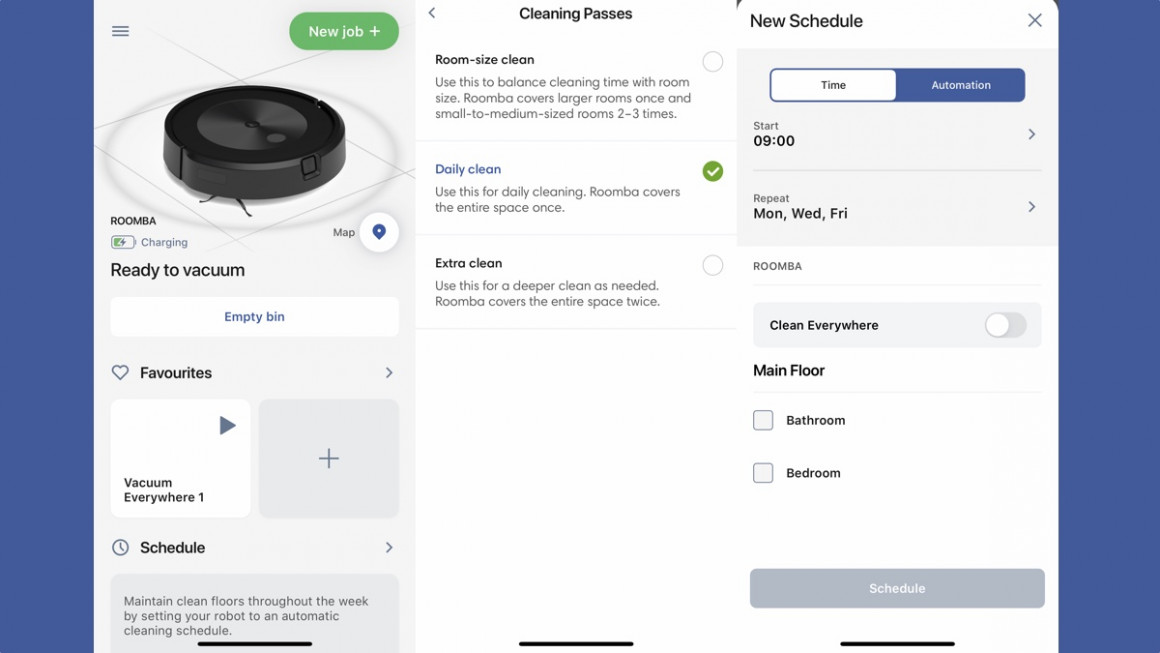
Room-size clean will cover large rooms once, and smaller rooms two-to-three times; Daily clean covers each room once; Extra clean covers each room twice.
There are extensive skills for Amazon Alexa and Google Assistant. Beyond the normal start/stop clean commands, you can schedule a clean for a day and time, set the j7+ to tackle a specific room, and tell the robot to return to dock.
This is as far cry from the simple start and stop commands you usually get with robo cleaners and digital assistants.
iRobot Roomba j7+: Battery life and maintenance
There’s no official quoted battery life for the iRobot j7+. We can tell you that it cleans for well over an hour without running low and, if there’s not enough charge to complete a job, the robot will return to the dock and top up its battery.
We’re truly at the stage now where robot vacuum cleaners have more than enough power to tackle a floor on a single charge.
There’s not much in the way of maintenance here. Aside from emptying the base’s bin, you’ll need to clean the filter on the robot’s bin. Check the brushes and rollers from time to time, too, and wipe away any dirt and replace the side brush when it’s damaged.
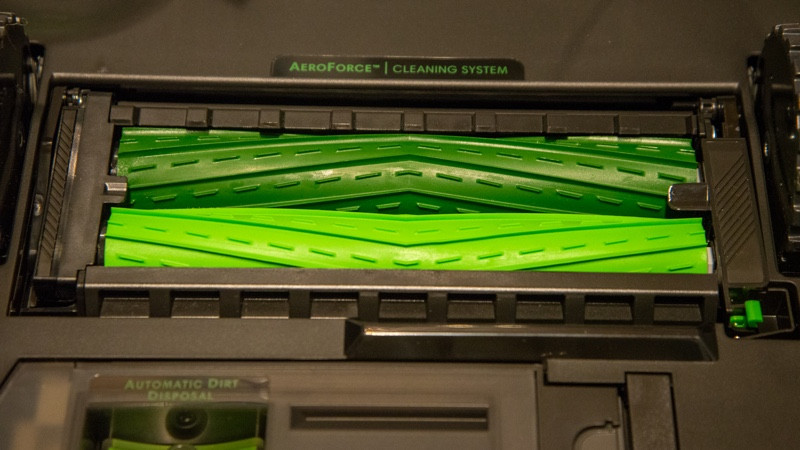
For the best performance and navigation, the sensors and camera should be kept clean, too.


